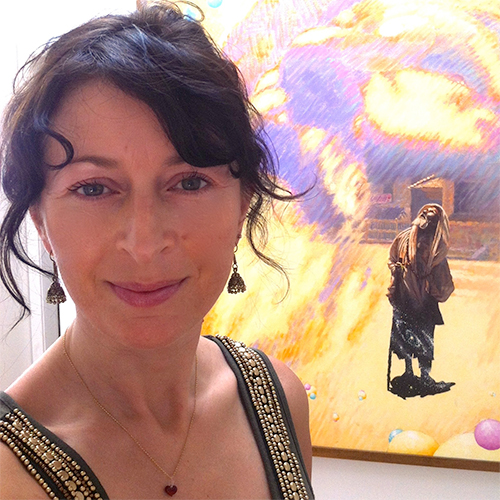There is a old and wise and saying “when the student is ready, the teacher will appear.” When I was a dedicated and energetic yoga practitioner in my early 30s, I thought I ‘got’ yoga – after all I had been practicing hatha and ashtanga yoga for some years, had read Autobiography of a Yogi, knew the asanas in sanskrit and felt like I was on the verge of invincible.
That was until one day I attended a class that I had previously avoided because it looked slow, quiet, and well…easy. During the class we were quietly instructed to moved into various positions with the support of bolsters, blocks and blankets as the teacher encouraged us to come to ‘our edge’ and remain still. From a series of poses called the ‘dragons’, I came face to face with such heat and agitation that my ego-identified ‘shanti self’ screamed, my mind ran wild like a hungry monkey and my hips cried out for mercy. My teacher had appeared and I humbly bowed to what yin yoga could teach me.
An essential practice and antidote to modern living
As the world speeds up – even for us in Mallorca – it is not surprising that yin yoga has risen in popularity. Having practiced yin yoga since 2002, I absolutely believe it is an essential practice and antidote to modern living.
Yin is not a Sanskrit word, but is a Taoist concept from China. The ubiquitous symbol of Yin and Yang ☯ is rooted in the understanding that all things exist and are defined as complementary opposites that cannot be conceived independent of each other. For example, we understand “hot”, “big”, and “light” in relation to their opposites “cold”, “small”, and “dark”.
Our yoga practice can reap great benefit and negate injury if we understand and feel our body from the perspective of Yin and Yang.
On a purely physical level, yin yoga stimulates the connective tissue and keeps it healthy, and focuses on the areas that encompass a joint, particularly the hips, sacrum, spine. By generating electric currents, it helps strengthen the connective tissue and increase the lubrication, protection and pliancy of the joints within their natural range of motion- particularly the hips and spine. These actions increase our capacity to sit comfortably for longer, benefiting our Yang practices, and bring grace and ease to our movements.
Nourishing and vitalising the vital organs
Like acupuncture without needles yin yoga strongly stimulates the connective tissue and the electromagnetic channels (meridians) that flow through them. The practice assists to enhance the flow of chi removing stagnation and blockages in the body, nourishing and vitalising the vital organs and the chakras that the meridians flow through.
In contrast to muscular yoga practices and sports that favour repetitive, dynamic, rhythmic stretches and contractions of muscles, yin yoga asks us to approach the body with the essence of surrender. It’s my experience that people are much better at ‘doing’ than letting go and this is what makes yin yoga a wonderful teacher. Firstly, we need to surrender and relax the muscles in order to load the deeper connective tissues and create change.
Secondly, in the spirit of surrender we are able to create more space in the mind by witnessing the nature of our thoughts and releasing habits of resistance.
With a meditative approach to yoga, yin yoga aims to cultivate an awareness of inner silence so that we can witness our emotions without judgment, be present to them and let them to flow.
Often mistaken for restorative yoga, yin postures are largely passive and mostly done on the floor with some supports so that the muscles can relax and load can be applied to the deep connective tissues closer to the bone.
To get the most out of your practice, be mindful of the following principles of yin yoga.
- The body does not require warming up since this is not a muscular practice and the aim is to create a load between the connective tissue and bones.
- The asana are entered into slowly and respectively with minimal effort. When resistance is felt in the body (your ‘edge’) allow yourself to surrender to the pose and gravity.
- Become still in order to release the muscles and the mind.
- Stay for three to five minutes or more in the posture.
The immediate benefits of yin yoga include a feeling of calmness, balance, open hips and centred mind, however allow yourself a few classes to really appreciate the full rewards. Wonderful at all ages, yin yoga maintains the joint flexibility that naturally decreases as we age and is a complimentary practice for those with anxiety, stress, sleep challenges, migraines and TMJ. Other benefits of yin yoga include increased bone density, reduced tension, balanced energy flow, greater relaxation and a counter-balance to a busy lifestyle.
Find a class near you or join me in Porreres on Monday’s at 19:30-20:30.
Written by Danielle Satya Parla
 |
About the authorDanielle is a psychologist, Transformational Breath® Group Leader, yoga teacher, energy worker and writer. Her retreat and practice space, Space to Breathe, is for those who wish to open their inner ear and awaken to a renewed vision of authentic health and happiness. Danielle’s work is a unique combination of western psychology, energetic medicine and intuitive healing — practices that have transformed her own life. Breathwork is central to her practice for it not only facilitates healing of the physical body, heart and mind, but also serves an evolutionary function for the spirit. She offers 1-1 breathwork sessions, group breathing circles, workshops and retreats in Mallorca and Switzerland.
|